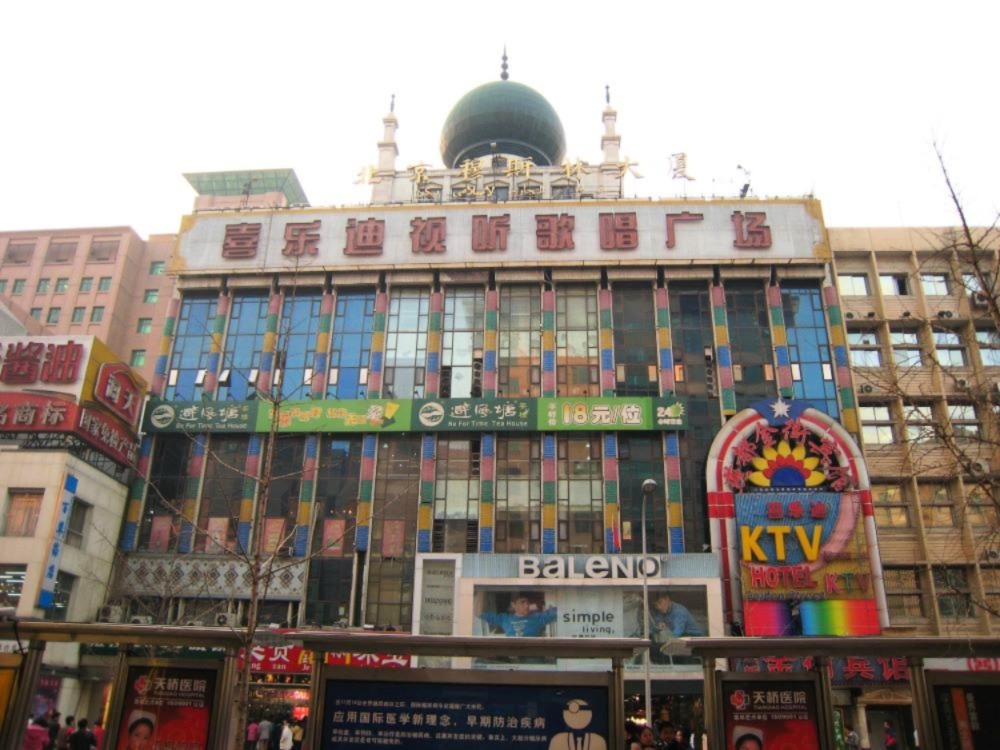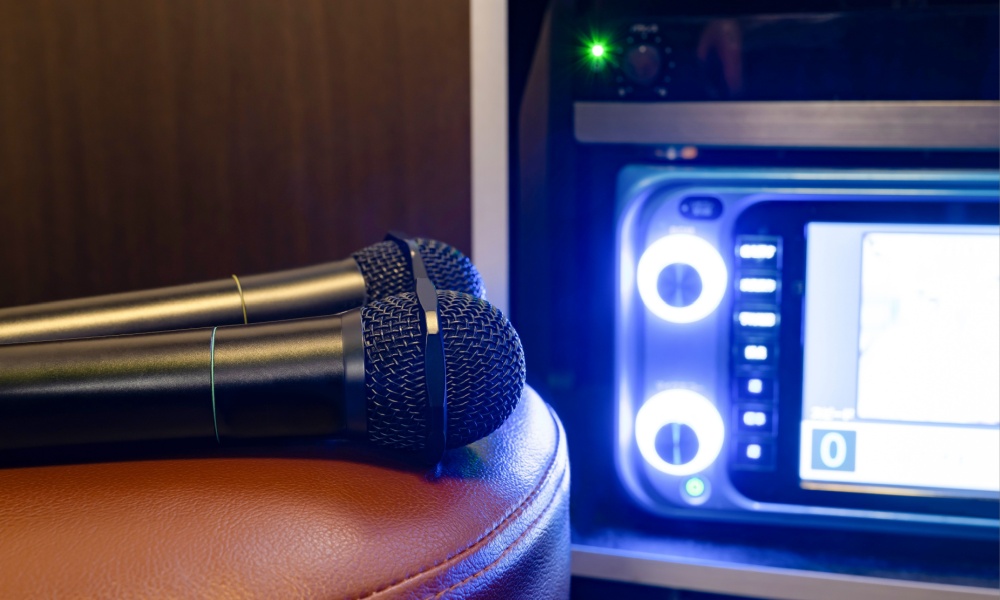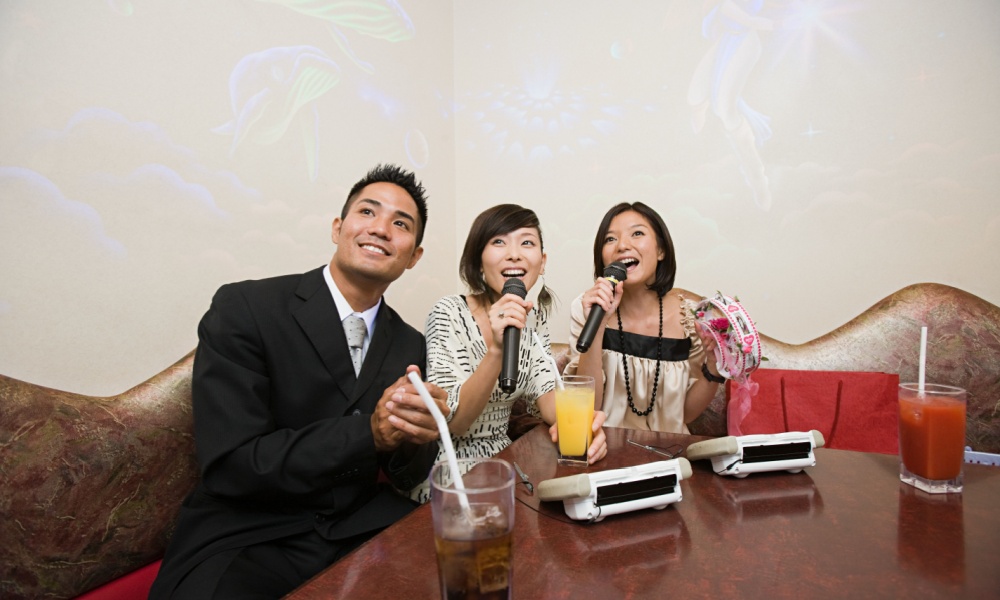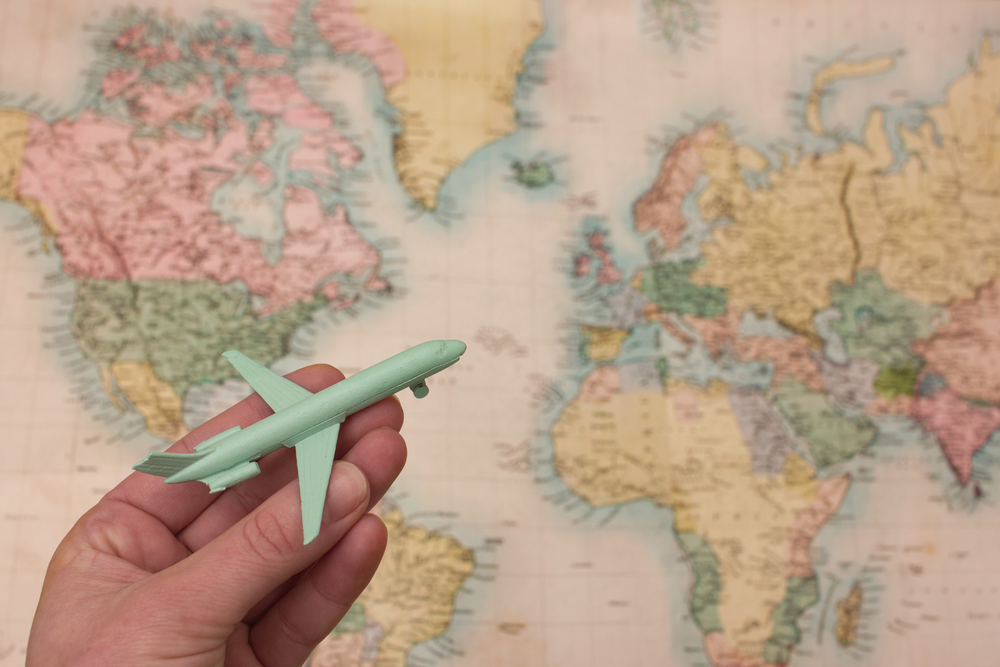There are plenty of reasons why people dream of exploring Asia: next-level street food, ancient history, budget shopping, and chasing waterfalls, to name a few. But once you’ve zigzagged your way through markets and slurped down your share of noodles, there’s one experience that will instantly connect you with locals and give you a window into how people really unwind there: karaoke.
Asia doesn’t joke around when it comes to singing. It’s not a fringe activity — it’s a mainstay of social life, a nightly wind-down ritual, and in some places, a full-blown event. The karaoke scene varies wildly across countries, each adding its own flavor. Our guide breaks it down for you country by country where you can grab a mic, crank the reverb, and go off-key with pride.

Tokyo, Japan
Our first stop is Japan, aka, the birthplace of karaoke. Tokyo especially is loaded with karaoke-kan (karaoke boxes), where groups can rent out private, soundproof rooms and go to town for an hour or all night. This isn’t a quirky fringe activity here — it’s normal, widely loved, and available on practically every corner near a train station. One classic spot to start with is Karaoke Kan in Shibuya. Yes, that’s the same place from Lost in Translation. They’ve got floor-to-ceiling windows with a Tokyo skyline view, touchscreen songbooks in English, and even costumes available.
For a more local chain, check out Big Echo or Uta Hiroba – both offer hundreds of locations nationwide, usually with decent hourly rates that include a drink or two. And if you’re flying solo, you’re still right at home. Look up 1Kara (in Akihabara or Shinjuku), which is all about solo karaoke in pint-sized booths with studio-quality headphones and no judgment, even if you sing the same song five times in a row.
Seoul, South Korea
In South Korea, karaoke goes by another name: noraebang, which means “singing room.” Here, it’s not really about performing to a crowd. Whether you’re out with coworkers, classmates, or relatives, ending up at a noraebang is practically tradition after dinner and drinks. In Seoul, start at Luxury Su Noraebang in Hongdae. It’s a well-known joint loved by university students and travelers. Neon signs, disco balls, solid equipment, comfy couches — it’s all there. If you want something a notch more stylish, check out Coin Noraebang Myeongdong. It’s for solo singers or couples, where you pop in a few coins and belt out songs while watching yourself on the in-room camera feed.
Koreans take their noraebang experience pretty seriously — but in a fun, slightly ridiculous way. You’ll see quirky voice filters to make you sound like a robot or a lounge singer, hardcore scoring systems that judge pitch and rhythm, and a song catalog stacked with K-pop tunes and emotional Korean ballads. Don’t feel pressured to impress anyone, though — what really counts is participation. And if you’re wandering late at night, you’ll spot tiny “coin noraebangs” all over the place. These glass booths fit two or three people and let you sing a couple of songs for about 1,000 won — perfect for spontaneous late-night serenades.

KTV by Johnn licensed under CC BY-SA 2.0
Taipei, Taiwan
Over in Taiwan, karaoke is often referred to as KTV (karaoke television), and it’s a full evening experience. Think velvet couches, bottle service, room service menus that rival those of five-star hotels, and floor-to-ceiling touchscreens. In Taipei, PartyWorld KTV (in Ximending) is also a classic choice — open late, packed with Mandopop hits, and perfect for a group night with local friends.
Mandopop and Cantopop are serious mainstays at these venues. You’ll hear classics from Jay Chou, Teresa Teng, and Faye Wong, and the themes often lean toward the romantic. Business karaoke is also a notable factor. If you’re out with professional contacts, the KTV trip that follows is a kind of extended informal meeting. You don’t usually have to sing, but… let’s be honest: you probably will. Keep it light, pick a classic English hit (yes, Celine Dion works), and smile through it. These KTV venues often come equipped with tambourines and props — so the experience can get weird, in the best way possible.
Manila, The Philippines
It doesn’t matter if you’re in a Manila high-rise or a rural province — someone is singing in the Philippines. Karaoke here lives everywhere from sidewalks to backyard birthday parties. In fact, you’ll likely hear someone singing before you’ve even had your morning coffee. For a public karaoke hangout, head to Music 21 Plaza in Makati — a karaoke chain with solid sound quality, cold Red Horse beer, and private rooms for you and your crew.
But honestly, the most authentic experiences are in small neighborhood bars or even just renting a Magic Sing mic in a home. People here know how to sing — like, American Idol know-how — but the point is never perfection. When in doubt, go with something fun and upbeat. Bon Jovi or anything by Air Supply is always a safe bet.
Bangkok, Thailand
In Thailand, karaoke is woven into the culture just as much as pad thai and tuk-tuks. Whether you’re in a Bangkok bar or a small-town community center, there’s probably a mic and speaker set nearby. In Bangkok, one go-to spot is Karaoke City on Sukhumvit Road. It’s easy to access, affordable, and packed with expats and locals alike.
What separates Thai karaoke sessions from some of their more polished neighbors is the open-air and DIY atmosphere. Don’t be surprised to see families out singing during outdoor birthdays or village celebrations, complete with rented karaoke machines and plastic chairs. Thai crowd favorites include local country tracks (luk thung), Thai pop, and a few still-lingering ’90s English hits. And don’t worry about hitting the right notes — enthusiasm here matters more than vocal acrobatics.
Ho Chi Minh City, Vietnam
Vietnam brings its own flair to karaoke. One famous karaoke spot in Ho Chi Minh City is Kingdom Karaoke in District 1, a huge venue known for flashy rooms and a deep Vietnamese and English-language catalog. Outdoor karaoke is arguably more “Vietnam” than the official lounges. Locals frequently set up large speakers in front of their homes or on sidewalks, plug in a laptop or smartphone, and invite the whole block to sing.
Often, performance is more communal than solo — with people jumping in and out of songs. The favorites? V-pop stars like Son Tung M-TP, as well as older Vietnamese love songs. If you’re attending someone’s house party or local celebration, don’t be shy. You’ll likely be handed a mic without warning, and yes, you’ll be expected to use it.

RELATED: Discover Traditional Japanese Crafts: A Hands-On Cultural Journey
Kuala Lumpur, Malaysia
Malaysia offers the full karaoke spectrum — from personal booths to mega-sized karaoke malls. In Kuala Lumpur, head to Red Box at Pavilion Mall — it’s sleek, English-friendly, and draws a crowd of locals every weekend. These mall-based karaoke chains are everywhere, and they’ve nailed the formula: clean rooms, crazy song selection, and delicious eats.
Malaysia juggles Malay-language ballads, Cantonese favorites, and a whole set of Western hits. You’ll hear Whitney Houston’s “I Will Always Love You” at least once a night. And just like many other parts of Asia, it’s less about talent and more about having a laugh. Kids, grandparents, and everyone in between pile into these air-conditioned rooms for a solid afternoon of singing. If you’ve got a friend group in either country, expect at least one karaoke invitation per weekend.
FAQs:
Q: Do I need to book karaoke rooms in advance?
A: In most cases, no — walk-ins are welcome, especially weekdays. But if you’re planning a weekend night at a popular venue (especially in cities like Tokyo or Seoul), it’s smart to call ahead or book online to avoid long waits.
Q: How much does karaoke typically cost in Asia?
A: Prices vary by country and city, but expect to pay anywhere from $5 to $15 per hour per person. Rates are often cheaper during the day and more expensive late at night or on weekends. Food and drinks are usually extra.
Q: What if I don’t speak the local language?
A: Many karaoke systems have English interfaces or multi-language menus, particularly in tourist-friendly venues. Staff in major cities are used to foreigners and may help you navigate the machine. Stick to international chains if you’re unsure.
Q: Can kids join karaoke sessions in Asia?
A: Absolutely. Many karaoke places, especially in malls or family-oriented chains like Red Box and K-Box, welcome children. Some even offer special daytime rates or kids’ song playlists. Just skip the late-night party spots.
Q: Is tipping required at karaoke venues?
A: Tipping is not expected in most karaoke venues across Asia. However, in certain upscale spots, a service charge may be included or a small tip might be appreciated.
Q: Are food and drinks allowed or available in karaoke rooms?
A: Yes. Most venues either sell food and drinks via room service or allow you to order from an on-site menu. Some budget spots might allow outside snacks, but always check ahead. Alcohol is usually available, especially after dark.
Q: Can I bring my own music tracks or microphone?
A: Generally, karaoke systems are closed to outside files or devices. However, a few places might support USB input or have Bluetooth options. Bringing your own mic isn’t common, but you won’t be judged if you do!
What’s your favorite karaoke song to sing? Tell us in the comments section below!





Leave a Reply